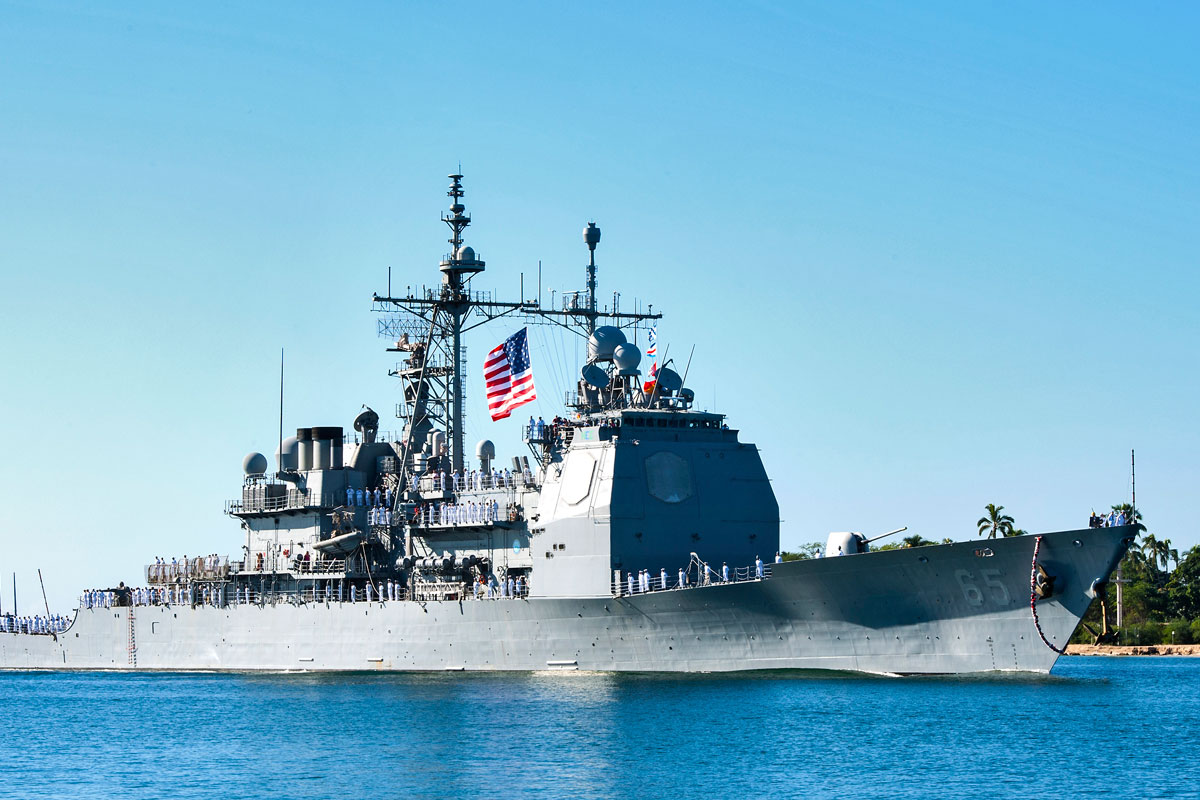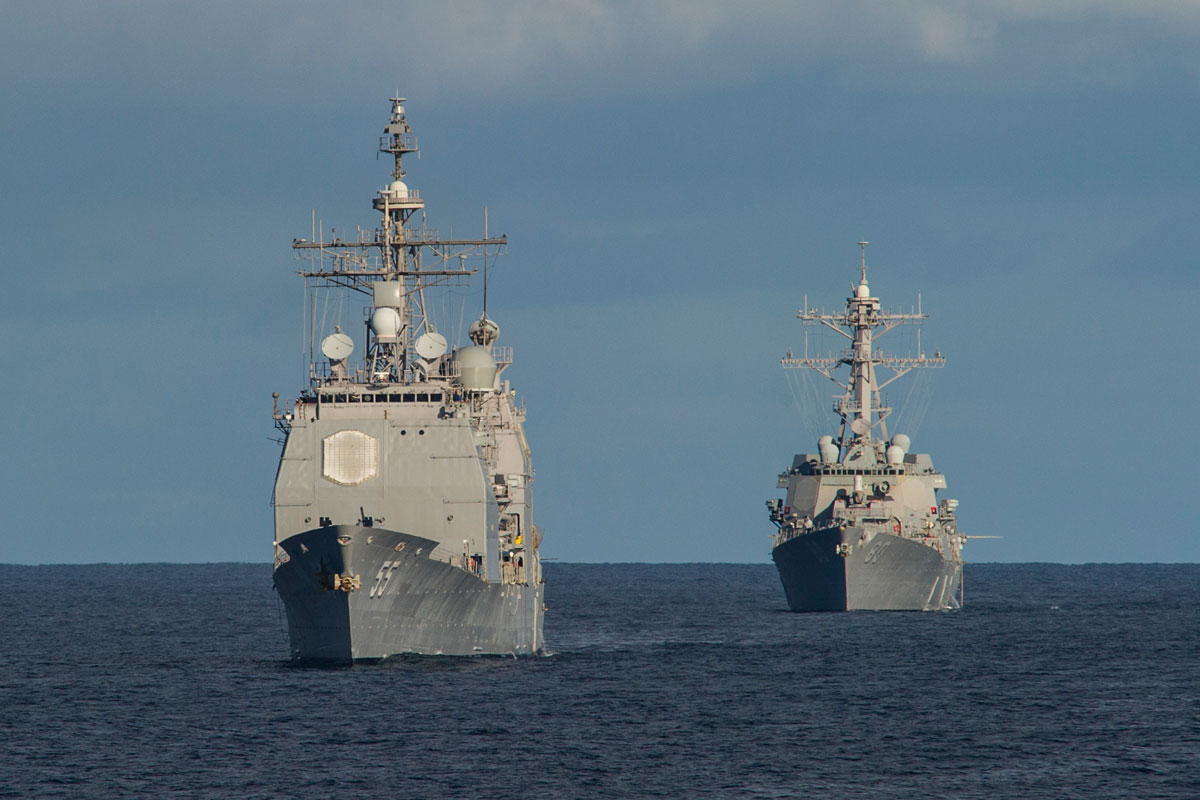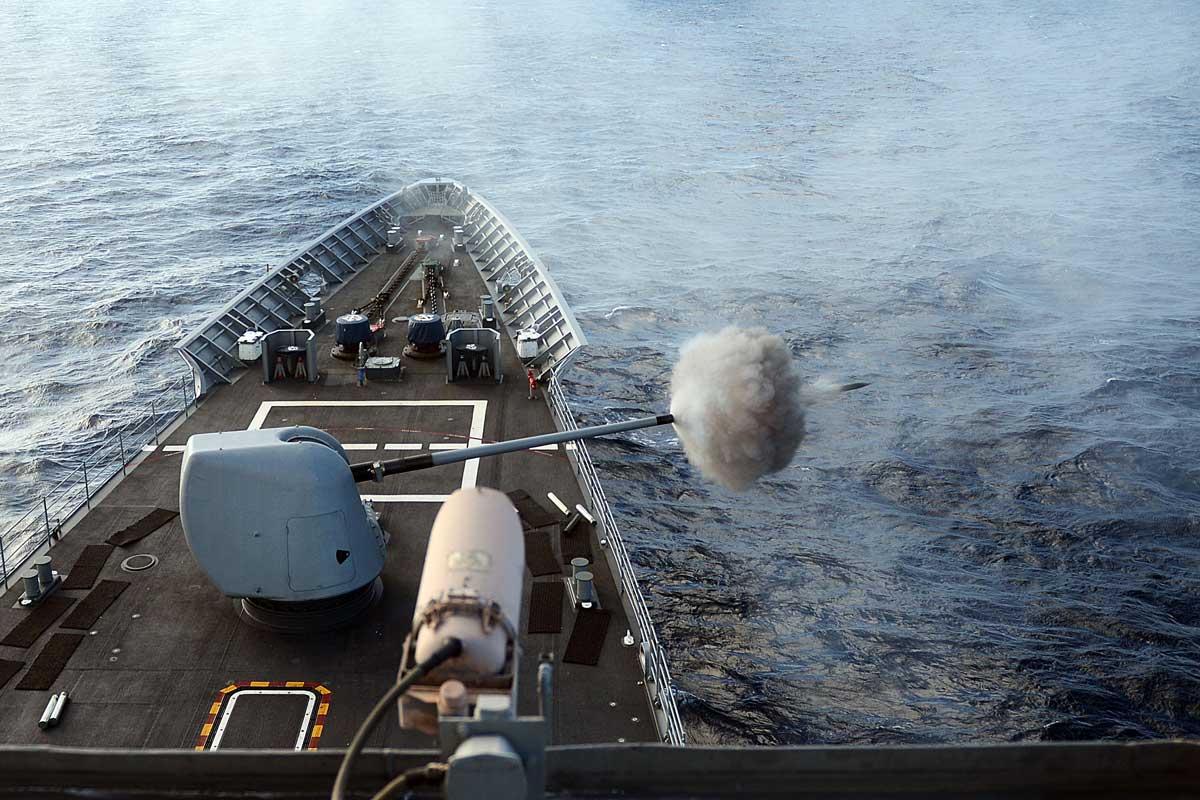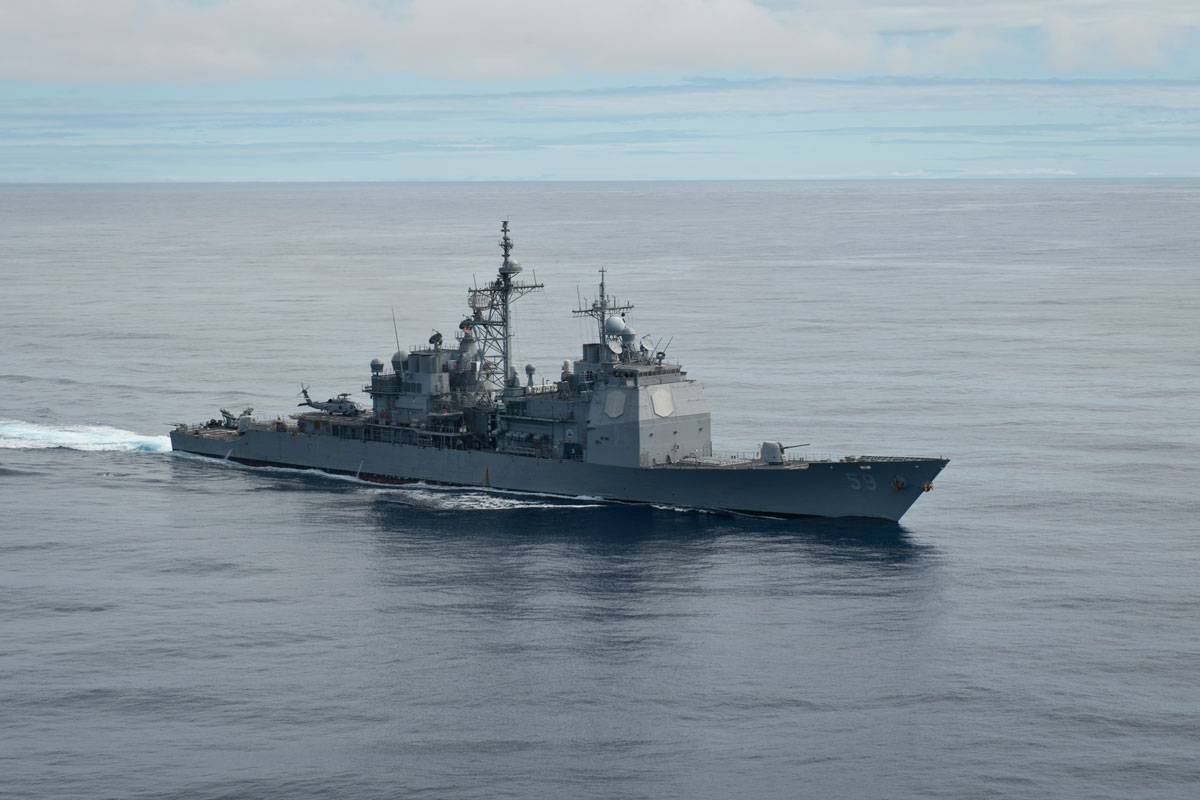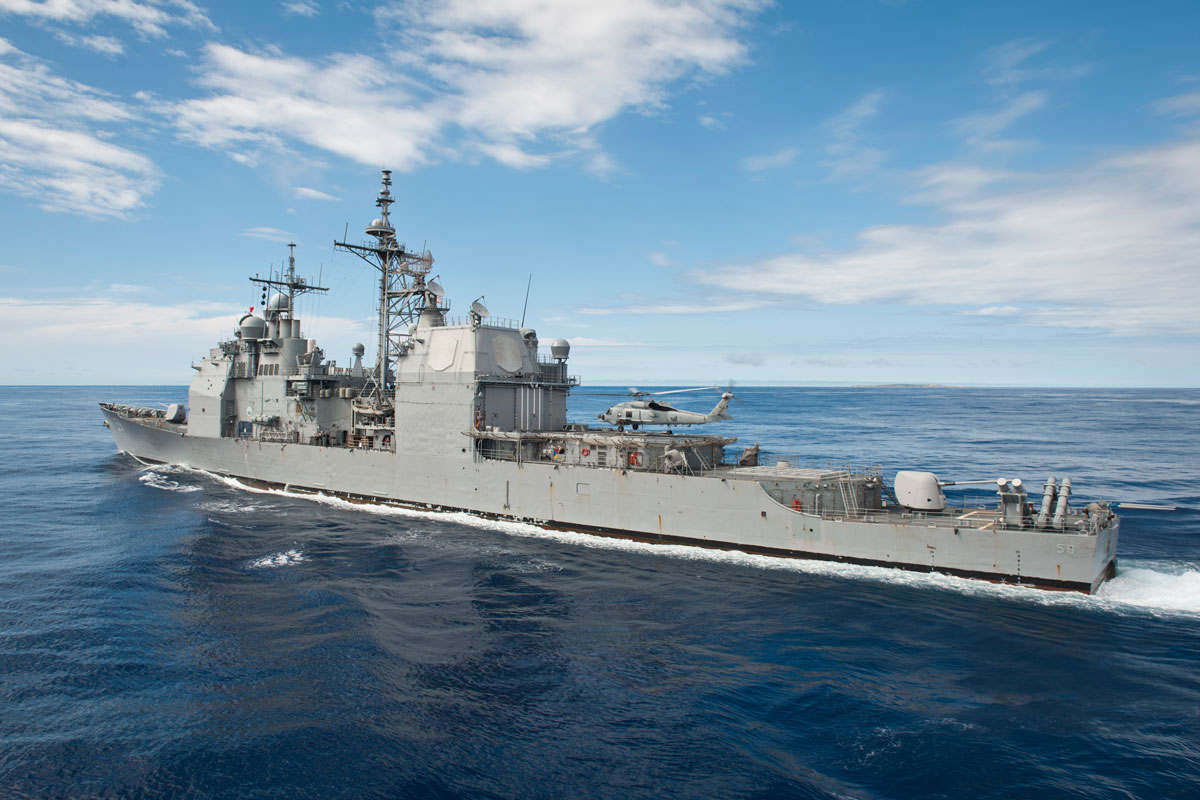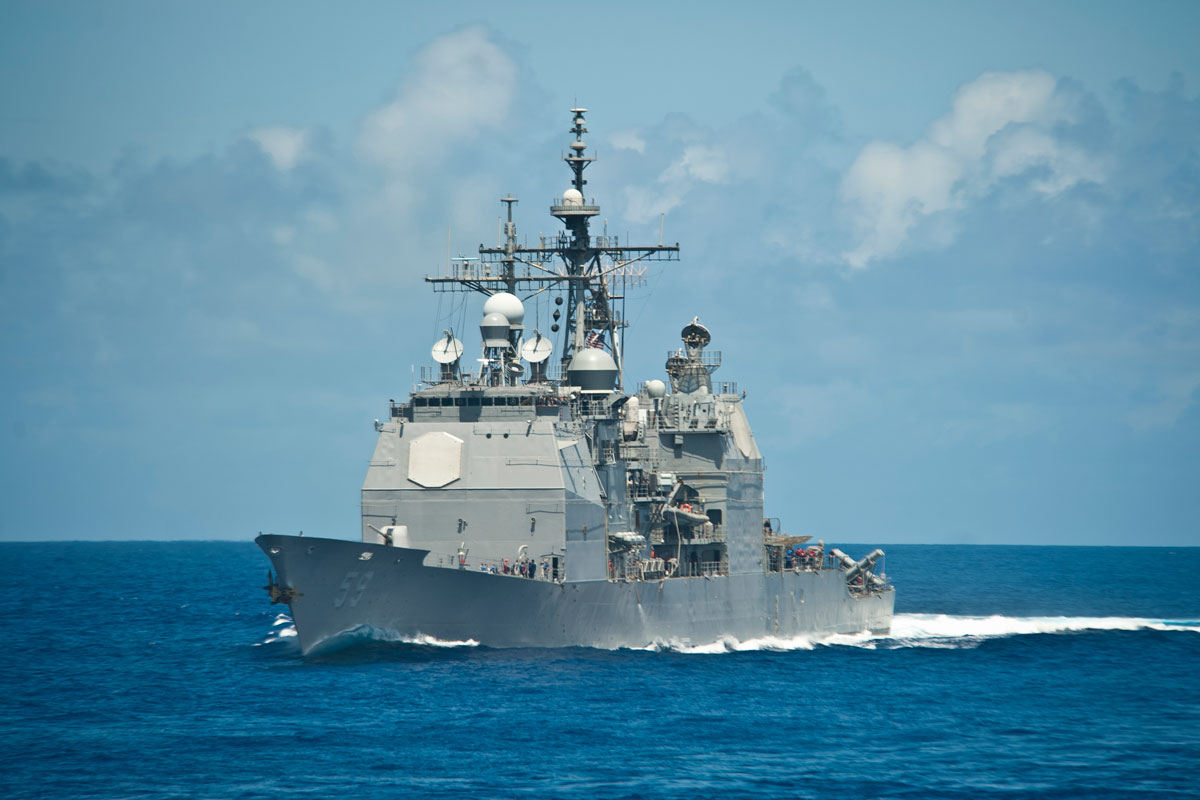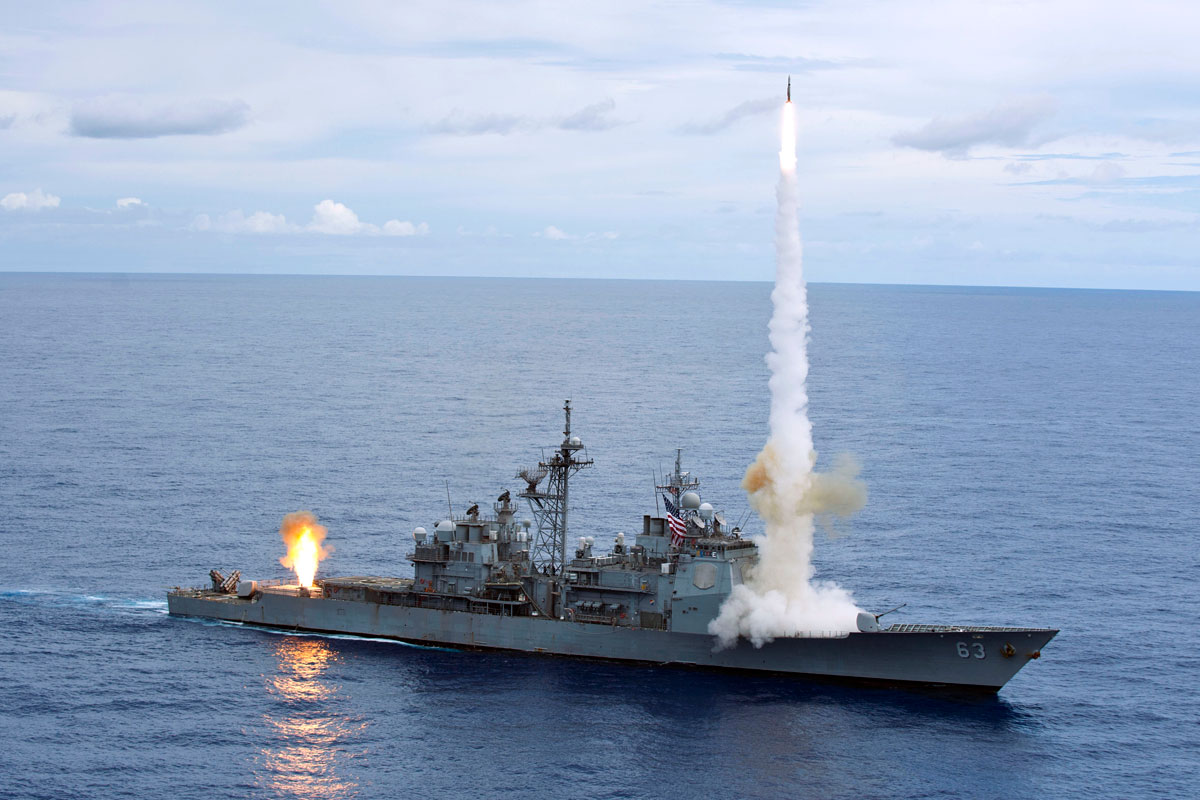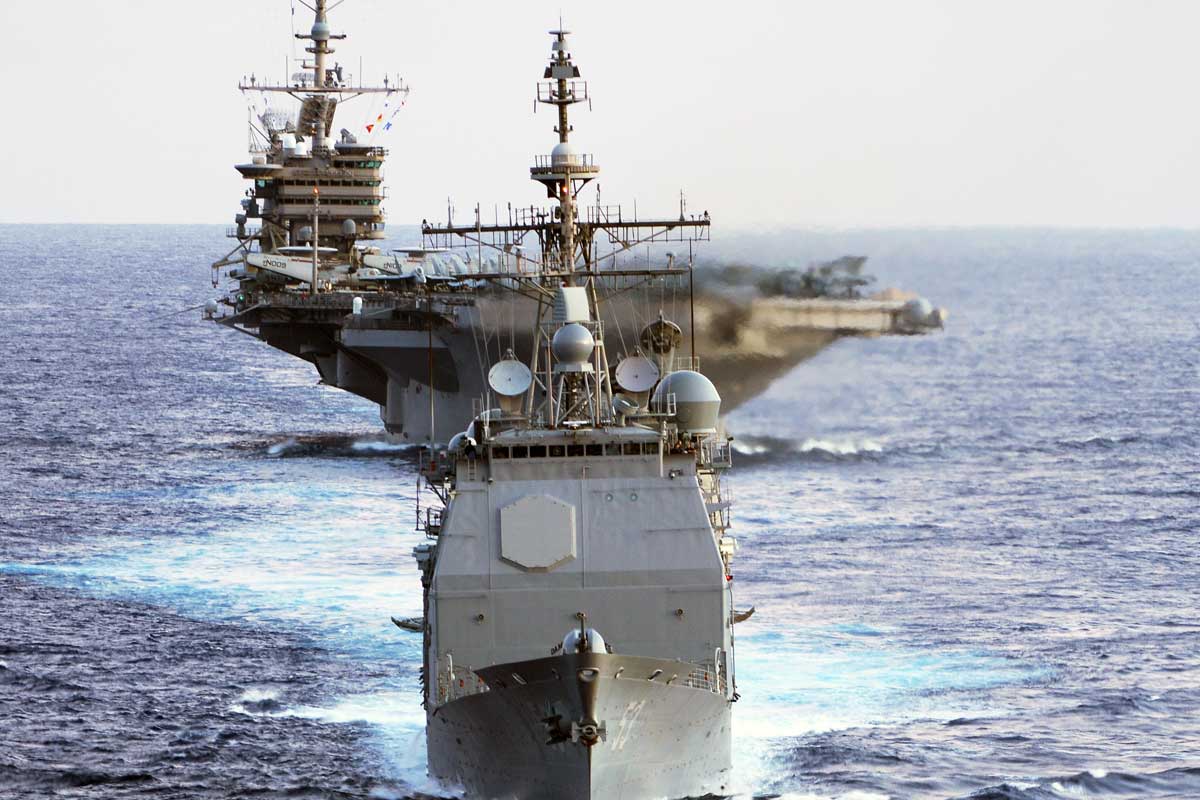Builder: Ingalls Shipbuilding; Bath Iron Works
Service: USN
Propulsion: 4x GE LM 2500 gas turbine engines, 2 shafts
Armament: MK41 vertical launching system Standard Missile (MR); Vertical Launch ASROC (VLA) Missile; Tomahawk Cruise Missile; Six MK-46 torpedoes (from two triple mounts); Two MK 45 5-inch/54 caliber lightweight guns; Two Phalanx close-in-weapons systems
Date Deployed: 22 January 1983 (USS Ticonderoga)
Speed: 30 knots
Crew: 30 Officers, 300 Enlisted
Widely known as the “Aegis Cruiser” due to its technologically advanced Aegis combat management system, the Ticonderoga Class guided missile cruiser is perhaps the most recognizable surface combatant in the U.S. Navy inventory.
Modern U.S. Navy guided missile cruisers perform primarily in a Battle Force role. These ships are multi-mission [Air Warfare (AW), Undersea Warfare (USW), Naval Surface Fire Support (NSFS) and Surface Warfare (SUW)] surface combatants capable of supporting carrier battle groups, amphibious forces, or of operating independently and as flagships of surface action groups. Cruisers are equipped with Tomahawk cruise missiles giving them additional long range Strike Warfare (STRW) capability. Some Aegis Cruisers have been outfitted with a Ballistic Missile Defense (BMD) capability.
Technological advances in the Standard Missile coupled with the Aegis combat system in the Ticonderoga class Cruisers have increased the AAW capability of surface combatants to pinpoint accuracy from wave-top to zenith. The addition of Tomahawk in the CG-47 has vastly complicated unit target planning for any potential enemy and returned an offensive strike role to the surface forces that seemed to have been lost to air power at Pearl Harbor.
The lead ship of the class, USS Ticonderoga (CG 47) through CG-51 have been decommissioned. Over the next several years, many Ticonderoga-class guided-missile cruisers will undergo a structured modernization to ensure they reach their projected 35-year service life. The Cruiser Modernization program aims to improve the CG-47 Ticonderoga class by modernizing the computing and display infrastructure, and the Hull, Mechanical and Electrical (HM&E) systems.
Weapons and sensor sets will also be improved, in order to upgrade their anti-submarine capabilities, add short range electro-optical systems that can monitor the ship’s surroundings without the use of radar emissions, as well as routine machinery upgrades to improve all areas of ship functionality. The modernized cruisers are expected to become more cost efficient to operate, as their lives are extended to serve in the fleet through the year 2030.
Ships in class:
USS Bunker Hill (CG 52), San Diego, CA
USS Mobile Bay (CG 53), San Diego, CA
USS Antietam (CG 54), Yokosuka, Japan
USS Leyte Gulf (CG 55), Norfolk, VA
USS San Jacinto (CG 56), Norfolk, VA
USS Lake Champlain (CG 57), San Diego, CA
USS Philippine Sea (CG 58), Mayport, FL
USS Princeton (CG 59), San Diego, CA
USS Normandy (CG 60), Norfolk, VA
USS Monterey (CG 61), Norfolk, VA
USS Chancellorsville (CG 62), San Diego, CA
USS Cowpens (CG 63), San Diego, CA
USS Gettysburg (CG 64), Mayport, FL
USS Chosin (CG 65), Pearl Harbor, HI
USS Hue City (CG 66), Mayport, FL
USS Shiloh (CG 67), Yokosuka, Japan
USS Anzio (CG 68), Norfolk, VA
USS Vicksburg (CG 69), Mayport, FL
USS Lake Erie (CG 70), Pearl Harbor, HI
USS Cape St. George (CG 71), San Diego, CA
USS Vella Gulf (CG 72), Norfolk, VA
USS Port Royal (CG 73), Pearl Harbor, HI
